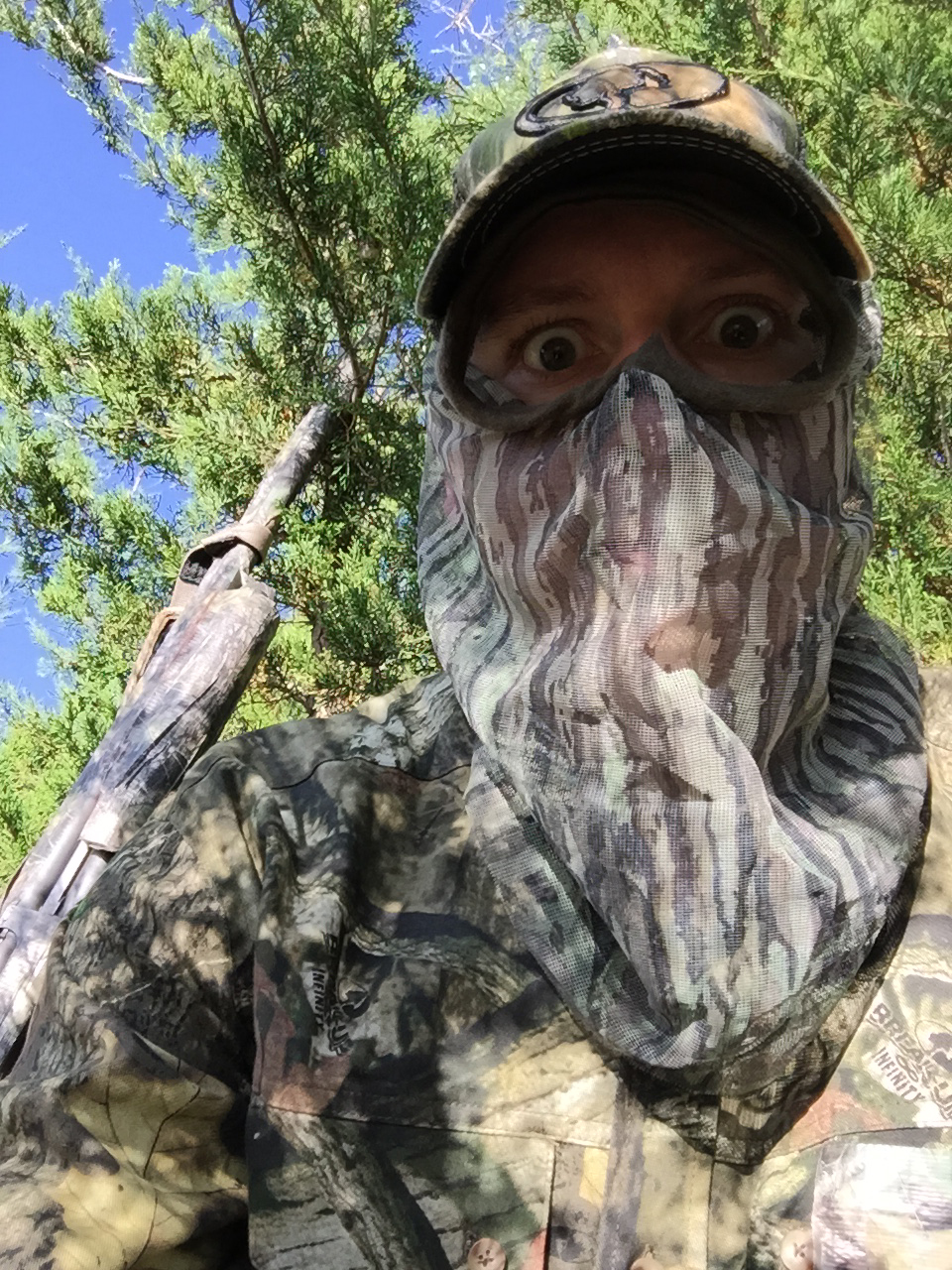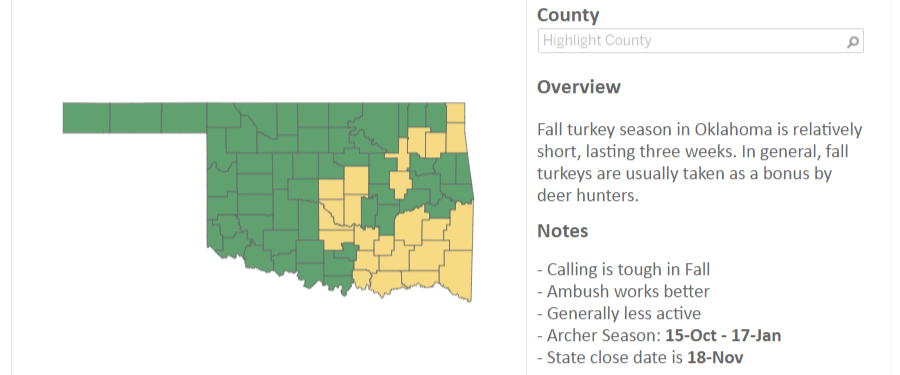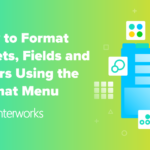Ah, the weeks after Thanksgiving. Nothing but cold turkey sandwiches and residual guilt from eating so much. Even though this post comes at a time when we’re all exceedingly tired of this tasty fowl, I couldn’t get an idea for a viz out of my head: Why not visualize when and where you can hunt turkey in Oklahoma? Check out the viz below, then read on for some backstory.
A Little History
It’s no surprise that many Oklahomans really dig hunting. I’m no exception. I grew up in a family that enjoys bird hunting – anything from duck to quail to, you guessed it, turkey. We were often busy with other activities growing up, but every so often we’d take a Saturday and try our luck. Naturally, the older and busier I got, the tougher it became.
It wasn’t until some four or five years ago upon finishing college that I felt the urge to get back out there again. Now, I make the pilgrimage back home to the high plains of Western Oklahoma each fall and spring to go hunting with my dad. Since our family hasn’t had trained bird dogs for some time, we’ve particularly taken to turkey hunting.

Above: Taking position in a cedar grove at Cooper WMA. Good camo is crucial to turkey hunting.
Whether it’s ambushing them in the canyon bottoms in fall or patiently calling them in on the edge of a wheat field in spring, turkey hunting is always enjoyable. It’s definitely better when you get a bird at the end of the day, but simply being out in nature is half the fun. It’s all a very hunter-gatherer, provide-for-yourself sort of appeal, but I love it.
It’s one thing to enjoy the idea of hunting, but how do hunters actually find birds? It’s not as if you can just step outside your front door and the birds are there (well, most of the time). The short answer is that it all comes down to data.

Above: Sunset at Cooper WMA, near the North Canadian River.
The Data Behind Hunting
Hunters have always relied on data in some form or another to track their prey. They have to know when to hunt, where to hunt and what to look for. When I say “data,” I don’t necessarily mean text and numbers stored in database as we might think of it today. Rather, the data hunters rely on comes from firsthand observation of an environment – be it your own observations or someone else’s. Though not always recorded with pen and paper, this knowledge is the cornerstone of hunting.
Fortunately for us, we’re getting better at merging the worlds of firsthand wildlife observation and modern data analysis. Don’t get me wrong, wildlife departments have long since kept written records of wildlife information in their respective domains. I’m sure it was possible to discover this information somehow, but the dawn of the internet has done wonders for improving accessibility and garnering deeper insights.
In the case of my native Oklahoma, the Oklahoma Department of Wildlife posts quite a bit of information online. You can view regulations, look at maps and even purchase your license and tags. It’s all wonderfully convenient. It wasn’t until about two years ago that I first noticed that they have a dedicated page for each Wildlife Management Area (WMA), Wildlife Preserve, etc. in the state.
For those of you unfamiliar with these areas, WMAs and the like are public lands open to hunting and fishing. On these pages, I noticed that they included some information about wildlife found in that area in addition to estimated numbers. This is incredibly useful when deciding where to hunt, though it does require some page surfing. This brings me back to my original idea: Why not include all the useful information a turkey hunter might need in one location? Cue Tableau.
Tableau-ing Turkey Data
After a little manual entry of data found on the Oklahoma Department of Wildlife site from various pages, maps and image, I was able to compile a good chunk of it together in one Tableau viz. Some of the visualizations are merely recreations of existing maps, so they’re not groundbreaking by any means, but the benefit is that they are all in one place.
The final viz of this story is something new altogether. It shows all public hunting lands in Oklahoma along with their level of competition and turkey population estimates. So, if you get the urge to go turkey hunting in Oklahoma, you can use this viz to find the right public hunting area for you. It won’t guarantee a bird, but hopefully it helps you get a little closer. Happy hunting!
NOTE: I know that fall turkey season is closed (except archery), but the regs rarely change much from year to year. With that in mind, this viz should still be a decent guide for next fall. Of course, if you really want a bird, you’ll probably have more luck in the the Spring anyway. Wherever you decide to go, ALWAYS check the specific regulations for that location first. You can do so here.
I should also note that I am NOT a Tableau consultant like the rest of our data rock stars on staff. I am but a humble marketer who knows enough to get in trouble. Special thanks to James Wright, Kent Sloan, Robert Rouse, Will Jones, Carl Slifer and the hive mind of our Viz Lab for their tidbits of advice.





